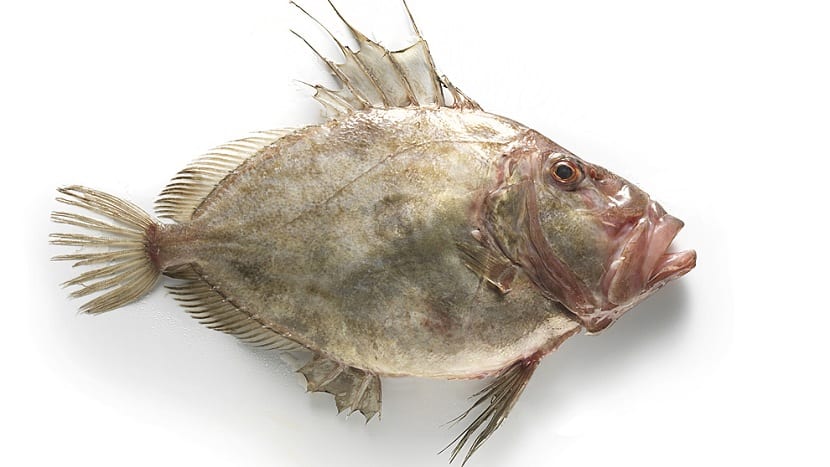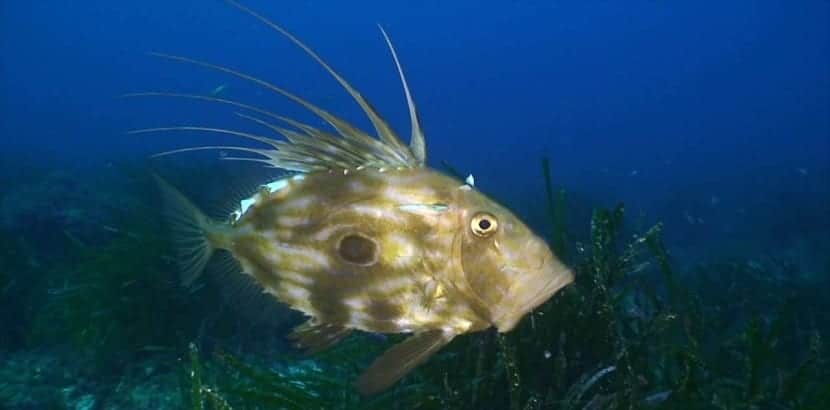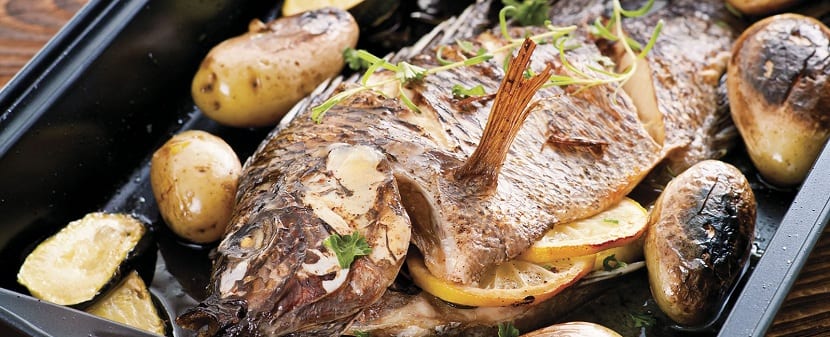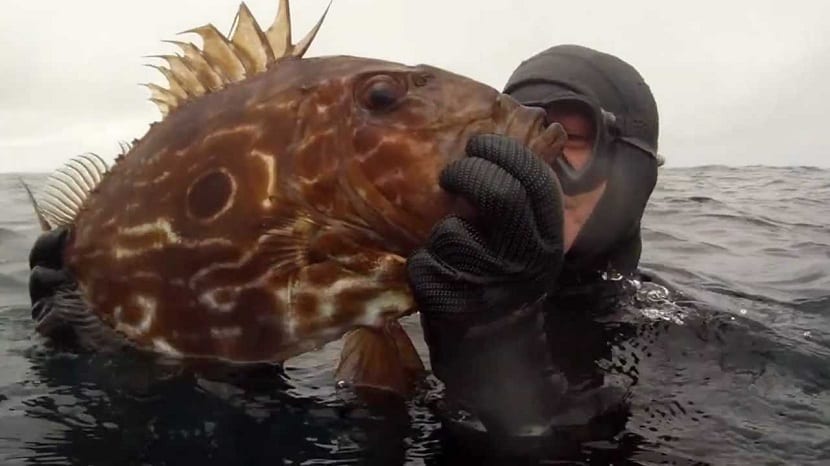
Today we have to talk about a somewhat exotic fish. Its about san pedro fish. It is also known by the common name of San Martín fish and its scientific name is Zeus faber. It belongs to the group of teleosts and is considered a delicacy in gastronomy, although, as not much is known about the species, it is not as widely consumed in the world.
Let's learn more about the San Pedro fish!
Key features

This fish has the body quite compressed laterally and oval. The color is yellow-olive just as if it were soaked in oil. You can see a pattern of horizontal lines from its head to tail with a large dark spot on its sides. The head is larger than normal and has bony ridges on it. Although the head is large and its eyes also accompany it, its mouth is smaller and protractile.
They are fish that when they reach sexual maturity develop longer filaments on the back of the dorsal fin. This is usually used as an indication for those researchers who are trying to study the species and find out its stage. It has small scales, although in some species they are not noticeable.
The eyes are intense yellow and the nostrils are very close and glued together. The normal thing is that its life expectancy is around 12 years and in this time reaches a length of 60 cm and about 10 kg of weight. It has a quite solitary behavior, although sometimes it can be seen forming schools of up to 6 or 7 specimens. This can be seen in the mating season, to increase the probability of finding a mate.
The main feature that makes this fish stand out the most is its ugly appearance. Not because it is ugly, but because of this aspect, could go unnoticed for a long time as fishermen and consumers didn't bother trying to catch them. It was more common to catch other fish such as hake, snapper and sardines. However, over time, many diners have tasted its exquisite meat and have highlighted the San Pedo fish as one of the richest delicacies. Its meat is tender, fine and white and when eaten it softens the palate a lot.
Range and habitat

These fish can be found in the shallow areas of the sea. It is considered a pelagic species. The lowest depth that has been found is 200 m. It usually hunts its prey without being seen, since it buries itself in the sand at the bottom of the sea and then rises to the surface. Its area of distribution covers almost all the seas of the world. Where there is more concentration may be in areas from the Mediterranean Sea to the Black Sea. They can also be found in areas of the Eastern Atlantic such as Australia, Japan, and New Zealand.
We can easily find this fish in Spain from one end of the peninsula to another. If we want to consume this fish, we may be confused because it receives different names, depending on the area where we order it. For example, in the Basque country he is known as Muxu Martin. In this area it is well known and consumed for being a tasty fish.
San Pedro fish diet

Although this fish does not seem too fearsome, it is found high in the food chain, along with other predators. The most common is that their diet is based on other fish of different species and in the juvenile stage. Among your favorite menu are sardines, anchovies and arengues. If these fish cannot find their preferred food, they may turn to another food such as cuttlefish, cephalopod mollusks, and squid.
In order to hunt its prey, it uses a most original technique. First, it buries itself at the bottom of the sea to go unnoticed and catch its prey by surprise. When buried, it leaves only its crest or spine to serve as a hook for another fish to bite. That's when he jumps for her and gobbles her up.
Another technique he uses to capture his food is one in which he approaches his victims very slowly and they pounce on them with their snouts until they end up swallowing them. Having such a slim body they are great swimmers.
Reproduction

These fish take a long time to reach adulthood and have the ability to reproduce. The most normal thing is that they take between 3 and 4 years to be able to have their own young. Another indicator of its maturity is its length. They must be between 29 and 35 cm to know that they are already suitable for reproduction.
They reproduce oviparously. The female lays her eggs and releases them into the sea. These eggs are later fertilized by the male, releasing the sperm. The area where they usually reproduce and spawn is in shallower water, around 100 meters. Both eggs and larvae are benthic and they can develop in the depths until they acquire swimming skills.
The reproduction process usually occurs in the summer months when temperatures are higher and food is more abundant. Depending on the temperature at which the water is, the fertilization process can occur earlier. In those warm waters You can see the San Pedro fish in production season in spring.
The young specimens travel long distances to find the ideal place to lay their eggs. On the other hand, the oldest ones stay in the usual areas to carry out the laying. It can be said that they are fish of traditions. Once they have laid their eggs, they have a great appetite and begin to devour prey quickly. This is another reason why breeding takes place in summer.
I hope that with this information you can learn more about the San Pedro fish and how good it is in gastronomy.